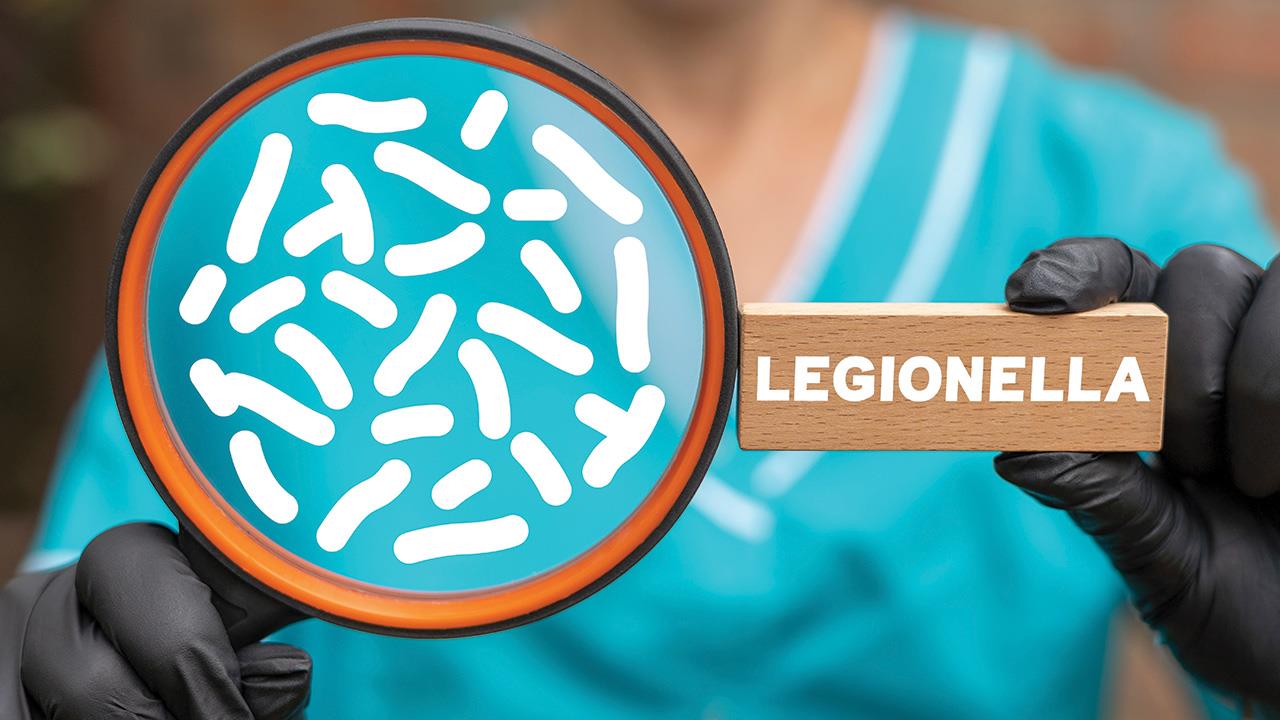

As most plumbing and heating installers are aware, Legionella pneumophila is the bacterium that causes Legionnaires’ disease. Though it can survive at temperatures up to 60°C, the bacterium flourishes between 20-45°C.
The disease is contracted by breathing in contaminated water droplets and, while healthy people generally won’t fall ill, for any elderly people, young children, or those who have compromised immune systems, Legionnaires’ can become a serious illness.
What are the risks?
Legionella bacteria can live inside residential and commercial water systems, and pose a significant threat to end-users. Being a lung infection, Legionnaires’ symptoms include coughing and shortness of breath, usually with a high fever. While deaths caused by Legionnaires’ disease are thankfully rare in the UK, it’s crucial that installers help educate the public on how to avoid a potentially grave situation.
One factor for increased Legionella risk is that the cost of living crisis caused some people to reduce their system temperature to save energy and money. Unfortunately, by lowering it to constantly below 60°C, end-users may have unwittingly increased the risk of Legionella.
How can growth be prevented?
Preventing Legionella growth is a fairly simple process: keep systems clean, keep them flowing, keep hot water hot and cold water cold. If cylinders are involved, hot water should be stored at 60°C or above. In almost all cases, hot water should reach 50°C within one minute of opening the outlet.
Thermostatic Mixing Valves (TMVs) should be installed to make these targets possible, safe, and comfortable for users. For Care Quality Commission (CQC)registered healthcare premises there is a slightly different standard which requires hot water to be flowing at 55°C within the same one-minute time limit.
Cold water must be stored and distributed so that it reaches 20°C or below within one minute of reaching outlets. Where installation and maintenance have been carried out correctly, these targets are usually reached far sooner than one minute.
Some may be wondering how Legionella can be kept at bay with the type of low temperature systems made mandatory by Part L. For safety, these systems have a pasteurisation cycle which temporarily brings water to 70°C, eliminating any hazardous Legionella bacteria. Pasteurisation can be set on a recurring timer and installers should recommend that customers set it to occur once a week, preferably at night when systems are less likely to be in active use.
Whether a customer’s system is low temperature or more traditional, such as a gas boiler, installers can prevent Legionella growth by identifying places in homes and systems where water is likely to be stagnant and within 20-45°C. Pipework layout should be taken into account as hot and cold pipes that are close together can allow heat transfer, causing water to sit between 20-45°C.
Considering prevention of heat transfer is vital. In cases where space restrictions pose a challenge to isolation, adding insulation between pipes is recommended.
Where are these problem places?
Uninsulated pipework can be a challenge, but it’s not the only possible source of problems.
Showers and showerheads, for example, can cause Legionella growth due to wet conditions and warm temperatures. Installers should recommend that customers regularly dismantle, clean, and descale their showerheads to avoid bacteria build-ups, such as Legionella.
Water butts can also be a hot spot for Legionella; the water inside may remain stagnant for months, meaning it can spend a long time within that 20-45°C range. This water should never be used in conjunction with a hosepipe or to fill paddling pools, but instead put towards keeping plants hydrated.
To do this safely, water should be slowly decanted into a watering can (without a rain-head attachment) before being used on plants. Similarly, water left inside a hosepipe can be warmed in the sun to 20-45°C and could release thousands of Legionella-carrying droplets when it’s next used. It’s worth recommending that hosepipes should be emptied after each use and stored out of direct sunlight.
What can be done?
Plumbing and heating professionals can support customers by providing a Home Health Check to identify elements of a system that need maintenance, repair, or replacement. There is a significant amount of misinformation about Legionella online and many people believe that Legionella bacteria only live in cooling systems or commercial premises. In reality, any system with the right conditions for Legionella growth can become an effective breeding ground.
In order to offer accurate tips and advice to their customers, installers should look for opportunities to proactively begin conversations on Legionella. This will further secure an installer’s reputation as a trusted professional and help protect the public from disease. The CIPHE’s guide on Legionella Risk Assessing in Domestic Properties is a valuable resource that provides a practical and structured approach to assessing residential spaces for the likelihood of Legionella growth and protecting end-users.
If you'd like to keep up-to-date with the latest developments in the heating and plumbing industry, why not subscribe to our weekly newsletters? Just click the button below and you can ensure all the latest industry news and new product information lands in your inbox every week.